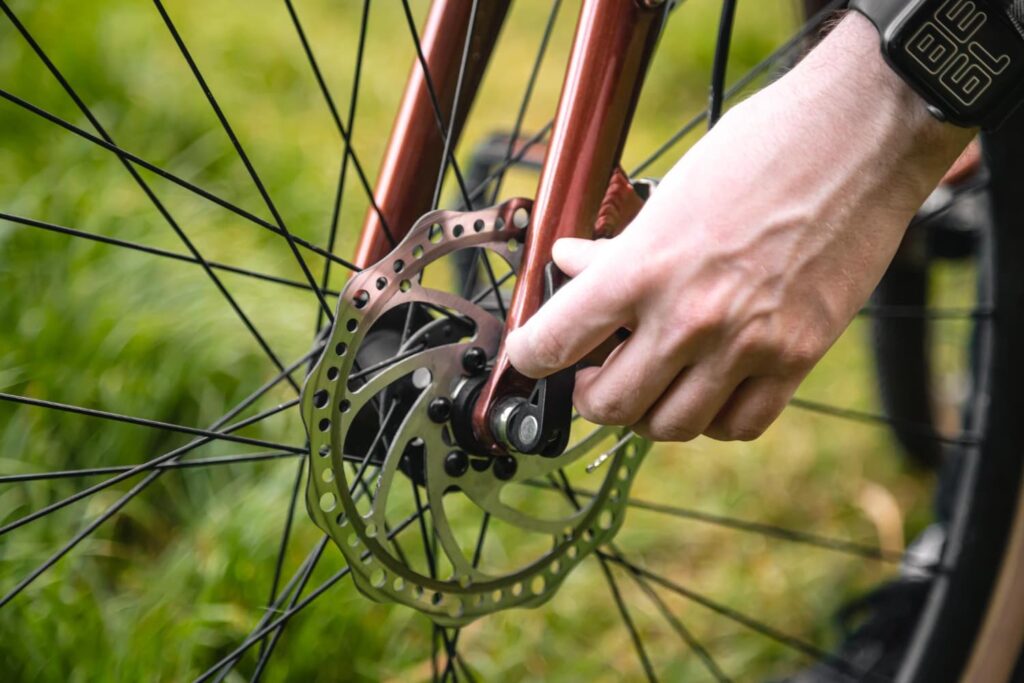Understanding MTB Brake Pads
When you’re cruising down a mountain trail, the last thing you want is a sudden brake failure. This is where mountain bike (MTB) brake pads come into play. They are crucial components in ensuring you can stop on a dime when you need to. Knowing how to replace them not only helps you keep your bike in top condition but also boosts your confidence on the trail. So, let’s dive into the world of brake pads and tackle this task together.
Identifying the Right Brake Pads
First things first: not all brake pads are created equal. Before you even think about replacing your pads, it’s essential to understand what kind you need. Most MTBs use one of two types of brakes: disc brakes or rim brakes.
Disc Brake Pads
If your bike has disc brakes, you’ll usually have either metallic or organic pads. Metallic pads offer great stopping power and durability but can wear down your rotors quicker. Organic pads, on the other hand, are quieter and provide excellent modulation but may wear out faster. You’ll want to consider your riding style and conditions when picking the right pads.
Rim Brake Pads
For those riding with rim brakes, the choices are simpler but still vital. You generally have soft or hard pads. Soft pads provide better stopping power, especially in wet conditions but wear down faster. Hard pads last longer but might not grip as well in rainy weather. Think about what conditions you ride in most to make the best choice.
Gathering Your Tools
Now that you know what type of pads to get, let’s gather the tools needed. Fortunately, replacing brake pads isn’t very complicated. Here’s a handy list:
- New brake pads (make sure they are the right type)
- Hex key or Allen wrench (size varies, typically 4mm or 5mm)
- Flat-head screwdriver
- Brake cleaner (optional, but recommended)
- Gloves (to keep your hands clean)
- Rags or paper towels
- Bike stand (optional but makes life easier)
Having these tools ready makes the process smooth as butter, so don’t skip this step.
Preparing Your Bike
Before you start replacing those pads, it’s essential to properly prepare your bike. First off, make sure it’s clean. A dirty bike can lead to grime getting into places it shouldn’t, and believe me, cleaning is always worth the effort.
Here are a few steps to prepare your bike:
- Secure the bike on a stand or flip it upside down for stability.
- Remove the front or rear wheel, depending on which brake pads you are replacing.
- Inspect the brake system for any visible damage.
Taking these steps makes your work easier and safer.
Removing the Old Brake Pads
Once you have everything prepped, it is time to get those old brake pads out. Here is the step-by-step process:
For Disc Brakes
1. Locate the retaining clip or pin that holds the brake pads in place.
2. Using your flat-head screwdriver, remove the retaining clip gently. Don’t force it; you don’t want it to fly away and end up in the Bermuda Triangle.
3. Pull out the old brake pads from their housing. You may have to wiggle them a little.
4. Inspect the caliper and rotor for wear. A clean surface makes for a smoother ride.
For Rim Brakes
1. Locate the brake pad retention bolt, typically at the back of the brake arm.
2. Use your Allen wrench to loosen the bolt. Do not remove it completely; just loosen it enough to slide out the pad.
3. Gently slide out the old pads and toss them aside. They served you well, but it is time for them to go.
4. Check the brake arms to ensure they are working correctly, too. No one wants sticky brakes.
Inserting the New Brake Pads
Now that you have removed the old pads, it is time to insert the new ones. Time for a fresh start!
For Disc Brakes
1. Grab your new brake pads and insert them into the caliper, ensuring they click in place.
2. Replace the retaining clip or pin to secure the pads and ensure they are locked in. You should feel it snap into place.
3. Use brake cleaner to wipe any excess grease or grime off the rotor. A clean rotor equals better braking performance.
For Rim Brakes
1. Insert the new brake pads into the brake arms, ensuring they fit snugly.
2. Tighten the retention bolt using your Allen wrench. Be careful not to overtighten. You want it snug but not Hercules-tight.
3. Adjust the angle of the pads so that they align with the rim properly. They should touch the rim with even pressure.
Reinstalling the Wheels
With the new pads in place, reinstall the wheels. Here’s how to do it right:
- Ensure the brake pads have a proper clearance before placing the wheel back.
- If using disc brakes, make sure the rotor is aligned with the caliper and pads.
- Secure the wheel properly, ensuring it is locked in place.
Testing Your New Brake Pads
Alright, now for the exciting part! You want to ensure everything is working smoothly before hitting the trails. Here’s how to properly test your new brake pads:
- Spin the wheels to check for rubbing. If you hear any noise or see uneven contact, adjust the pads.
- Press the brake levers a few times while stationary to seat the pads against the rotor or rim.
- Take the bike for a short test ride in a safe area. Test the brakes gently at first to ensure they are grabbing well.
Feeling that stopping power is one of the best feelings! Just be careful during the test ride, you don’t want to surprise yourself with how well they work.
Maintenance Tips for Your Brake Pads
Replacing brake pads can seem daunting at first, but it’s incredibly rewarding. To prolong the life of your new pads, here are some quick maintenance tips:
- Regularly clean your brake components to prevent dirt buildup.
- Inspect brake pads for wear regularly, especially if you ride frequently.
- Replace pads as soon as you notice any significant wear. Don’t wait until they are fully worn down; that can damage the rotor or rim.
Keeping an eye on your brake system is key to tackling those trails with confidence!
Conclusion
Replacing your MTB brake pads is not only about ensuring safety but also about enhancing your overall riding experience. By following this step-by-step guide, you can easily switch out your pads and feel like a pro in no time. Remember, mastering the basics will give you more confidence when tackling the more significant maintenance tasks down the line.
So, grab those tools, get to work, and hit the trails with fresh brake pads. You’ve got this!






